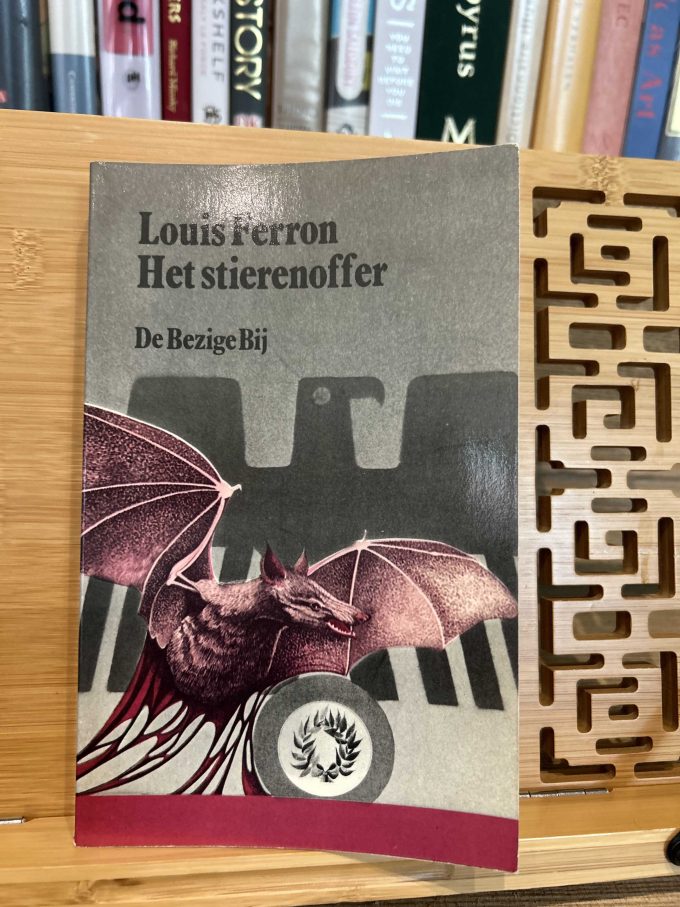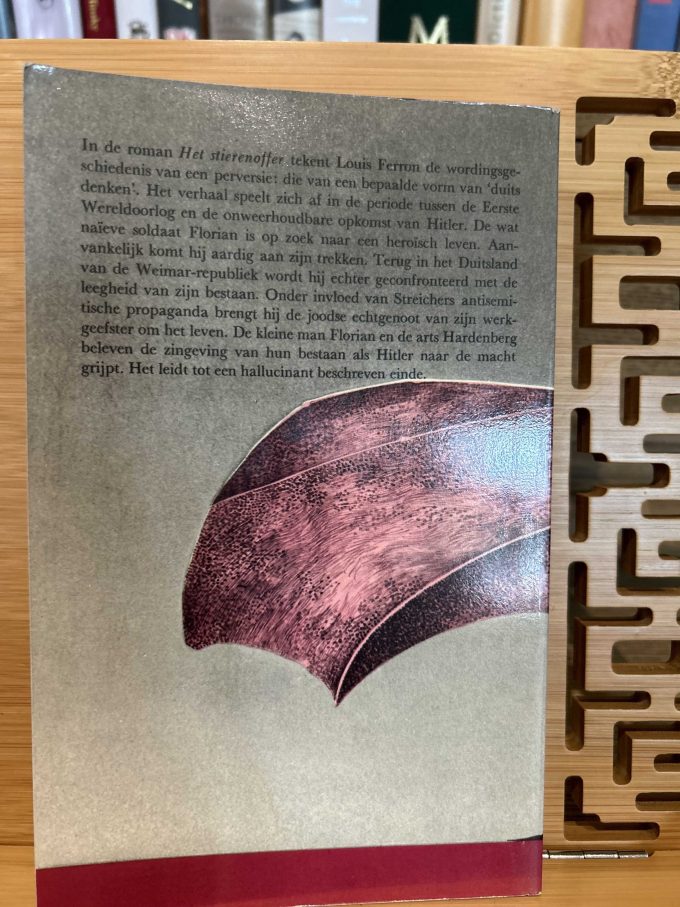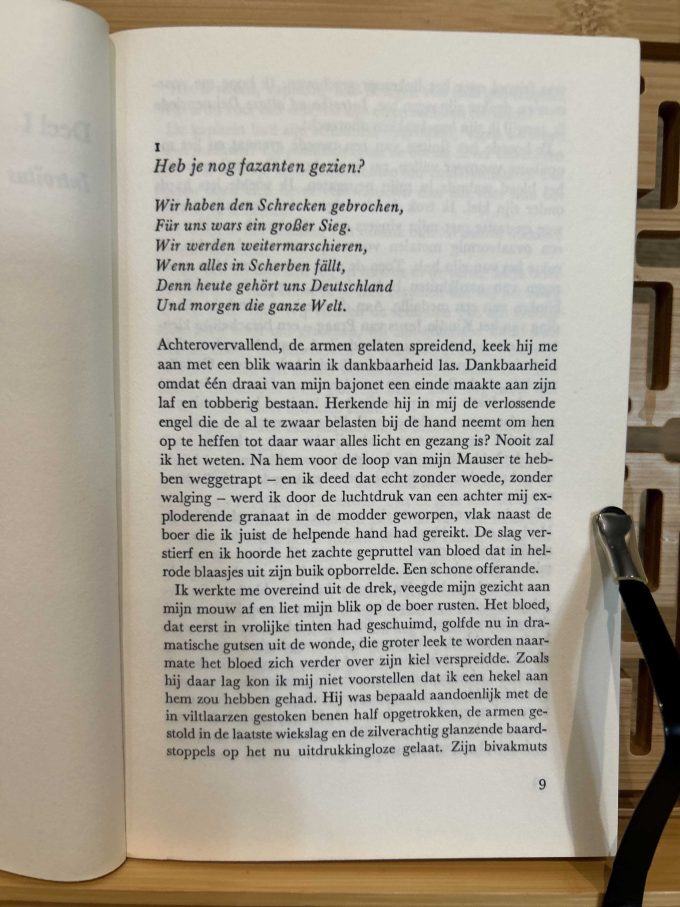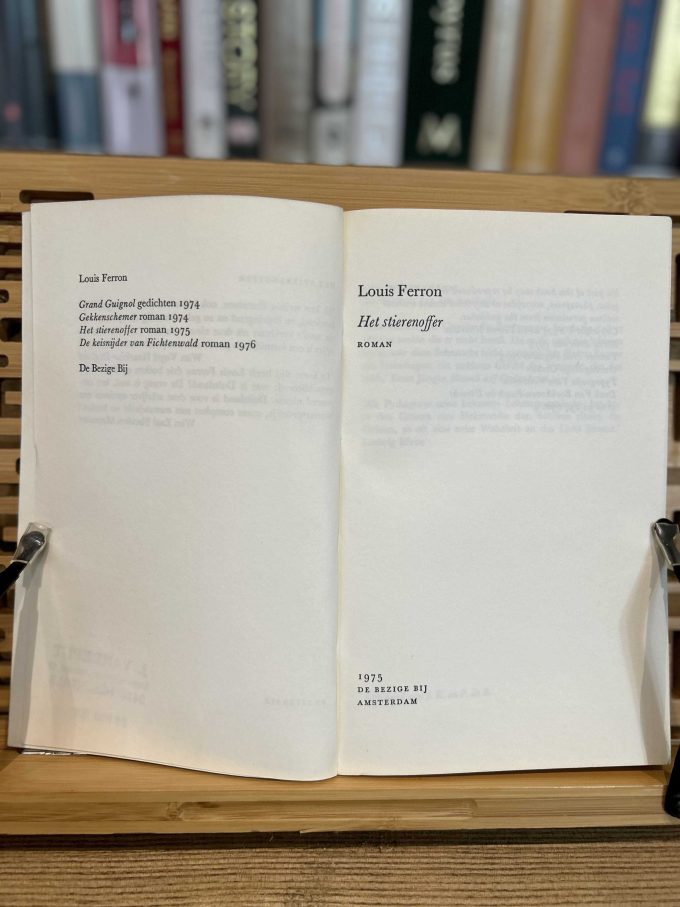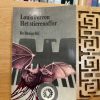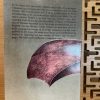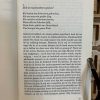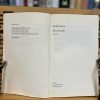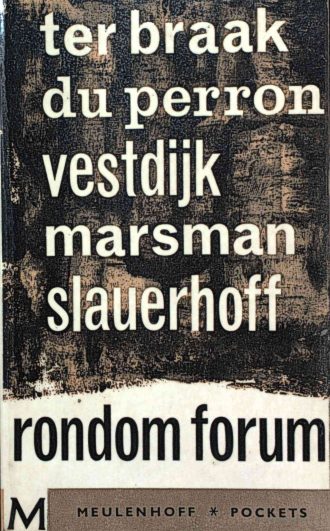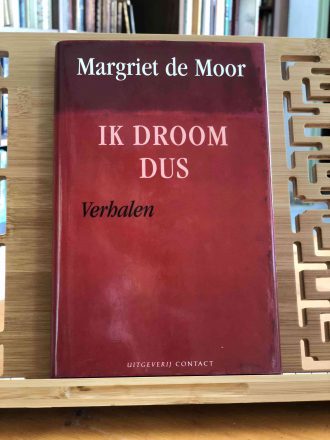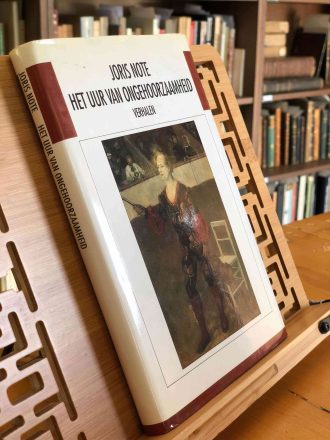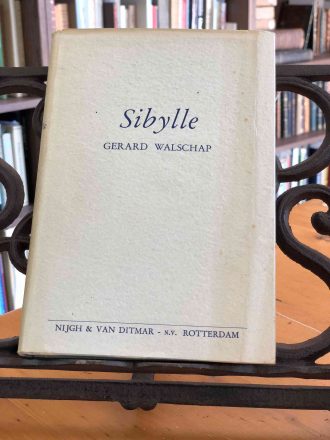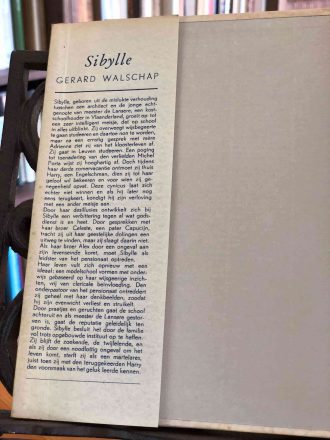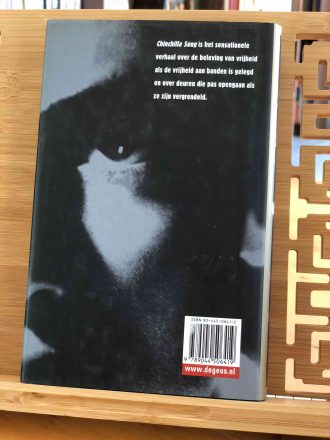Nederlands:
Het Stierenoffer van Louis Ferron, gepubliceerd in 1975, maakt deel uit van zijn “Teutoonse trilogie” samen met Gekkenschemer en De keisnijder van Fichtenwald. Deze roman speelt zich af in een fictieve Duitse setting en onderzoekt de complexiteit van menselijk gedrag en de historische impact van het nazisme. De protagonist, een voormalige SS-officier, worstelt met schuldgevoelens en morele dilemma’s voortkomend uit zijn daden tijdens de Tweede Wereldoorlog. Ferron belicht hoe deze personages hun verleden verwerken in een wereld die hen vaak desoriënteert en vervreemdt.
De roman is kenmerkend voor Ferrons laconieke en barokke stijl, waarbij hij ideologieën en romantische illusies bekritiseert die de werkelijkheid verhullen. Het thema van een ongrijpbare realiteit speelt een centrale rol, waarbij Ferron de complexiteit en ambiguïteit van zowel historische als persoonlijke ervaringen benadrukt. Zijn werk wordt vaak als postmodernistisch beschouwd vanwege de manier waarop het de moeilijkheid om de werkelijkheid volledig te begrijpen, en de onderliggende chaos van verlangens en sociale conventies, blootlegt.
Louis Ferron (1942-2005) was een Nederlandse schrijver en dichter, bekend om zijn diepgaande verkenning van de menselijke natuur en de geschiedenis. Zijn werk, beïnvloed door denkers als Friedrich Nietzsche en Sigmund Freud, en auteurs zoals Thomas Bernhard en Louis-Ferdinand Céline, onthult vaak verborgen aspecten van de menselijke psyche en de ingewikkelde sociale structuren. Ferron ontving diverse literaire prijzen, waaronder de Multatuliprijs en de Constantijn Huygensprijs, voor zijn bijdrage aan de Nederlandse literatuur.
English:
Het Stierenoffer (The Sacrificial Bull) by Louis Ferron, published in 1975, is part of his “Teutonic Trilogy” along with Gekkenschemer and De keisnijder van Fichtenwald. This novel is set in a fictional German environment and explores the complexities of human behavior and the historical impact of Nazism. The protagonist, a former SS officer, grapples with feelings of guilt and moral dilemmas arising from his actions during World War II. Ferron examines how these characters deal with their past in a world that often leaves them feeling disoriented and alienated.
The novel is characterized by Ferron’s laconic and baroque style, in which he critiques ideologies and romantic illusions that obscure reality. The theme of an elusive reality is central, as Ferron emphasizes the complexity and ambiguity of both historical and personal experiences. His work is often considered postmodernist due to its presentation of reality as difficult to fully grasp and its exploration of the underlying chaos of desires and social conventions.
Louis Ferron (1942-2005) was a Dutch writer and poet, known for his deep exploration of human nature and history. Influenced by thinkers like Friedrich Nietzsche and Sigmund Freud, and authors such as Thomas Bernhard and Louis-Ferdinand Céline, Ferron’s work often reveals hidden aspects of the human psyche and complex social structures. He received several literary awards, including the Multatuliprijs and the Constantijn Huygens Prize, for his contributions to Dutch literature.
Français:
Het Stierenoffer (Le Sacrifice du Taureau) de Louis Ferron, publié en 1975, fait partie de sa “trilogie teutonique” avec Gekkenschemer et De keisnijder van Fichtenwald. Ce roman se déroule dans un cadre fictif allemand et explore les complexités du comportement humain ainsi que l’impact historique du nazisme. Le protagoniste, un ancien officier SS, est aux prises avec des sentiments de culpabilité et des dilemmes moraux découlant de ses actions pendant la Seconde Guerre mondiale. Ferron examine comment ces personnages traitent leur passé dans un monde qui les laisse souvent désorientés et aliénés.
Le roman est caractérisé par le style laconique et baroque de Ferron, dans lequel il critique les idéologies et les illusions romantiques qui obscurcissent la réalité. Le thème d’une réalité insaisissable est central, Ferron mettant en évidence la complexité et l’ambiguïté des expériences historiques et personnelles. Son œuvre est souvent considérée comme postmoderniste en raison de sa représentation de la réalité comme difficile à saisir pleinement et de son exploration du chaos sous-jacent des désirs et des conventions sociales.
Louis Ferron (1942-2005) était un écrivain et poète néerlandais, connu pour sa profonde exploration de la nature humaine et de l’histoire. Influencé par des penseurs comme Friedrich Nietzsche et Sigmund Freud, ainsi que par des auteurs tels que Thomas Bernhard et Louis-Ferdinand Céline, l’œuvre de Ferron révèle souvent des aspects cachés de la psyché humaine et des structures sociales complexes. Il a reçu plusieurs prix littéraires, dont le prix Multatuliprijs et le prix Constantijn Huygens, pour ses contributions à la littérature néerlandaise.
